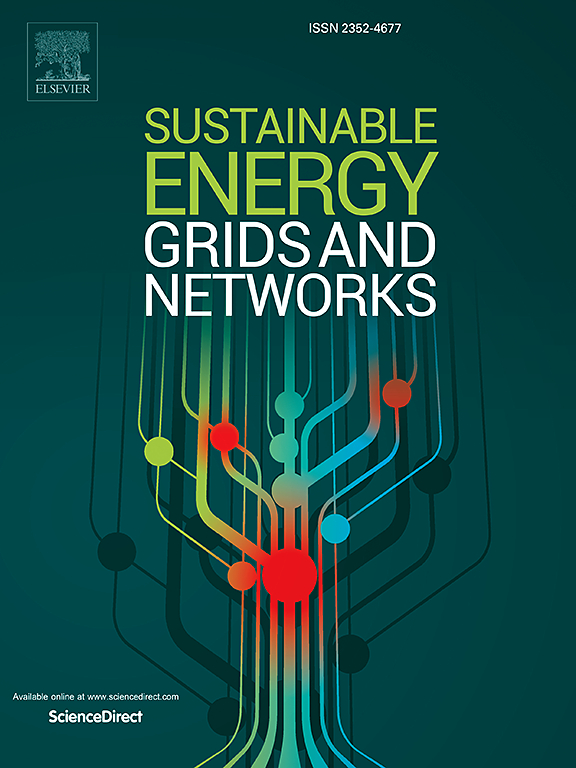Extreme value statistics of peak residential electricity demand: Effect of aggregation and moving-average smoothing
IF 4.8
2区 工程技术
Q2 ENERGY & FUELS
引用次数: 0
Abstract
Understanding the fluctuations in power demand is critical to the integration of variable renewable resources and the design of future electricity grids. We present an approach to determining the full statistical distribution of peak values of power demand based on extreme value statistics. We apply this method to characterizing the tails of the consumer demand distribution and exploring how peak electricity demand scales with aggregation over increasing numbers of consumers and moving-average smoothing at increasing timescales for two very different consumer groups. The results show evidence of fat tail distributions for some consumers. For both consumer groups, extreme values scale as an inverse power law with aggregation over increasing numbers of consumers and as a decaying exponential with the timescale of moving-average smoothing. Peak reduction by moving-average smoothing is much more sensitive to different sets of consumers than aggregation. As smoothing about a moving average is the primary effect of battery storage, this means that, in general, battery storage cannot play the same role as aggregation in reducing peak demand.
居民用电高峰需求极值统计:聚合效应与移动平均平滑
了解电力需求的波动对可变可再生资源的整合和未来电网的设计至关重要。提出了一种基于极值统计的确定电力需求峰值全统计分布的方法。我们将这种方法应用于描述消费者需求分布的尾部,并探索峰值电力需求如何随着消费者数量的增加而增加,以及两个非常不同的消费者群体在增加的时间尺度上的移动平均平滑。结果表明,在一些消费者中存在肥尾分布。对于这两个消费者群体,极值在消费者数量增加时表现为反幂律,在移动平均平滑的时间尺度上表现为衰减指数。移动平均平滑的峰值减少对不同的消费者集合比聚合更敏感。由于移动平均线的平滑是电池储能的主要效果,这意味着,一般来说,电池储能在减少峰值需求方面不能发挥与聚合相同的作用。
本文章由计算机程序翻译,如有差异,请以英文原文为准。
求助全文
约1分钟内获得全文
求助全文
来源期刊

Sustainable Energy Grids & Networks
Energy-Energy Engineering and Power Technology
CiteScore
7.90
自引率
13.00%
发文量
206
审稿时长
49 days
期刊介绍:
Sustainable Energy, Grids and Networks (SEGAN)is an international peer-reviewed publication for theoretical and applied research dealing with energy, information grids and power networks, including smart grids from super to micro grid scales. SEGAN welcomes papers describing fundamental advances in mathematical, statistical or computational methods with application to power and energy systems, as well as papers on applications, computation and modeling in the areas of electrical and energy systems with coupled information and communication technologies.
 求助内容:
求助内容: 应助结果提醒方式:
应助结果提醒方式:


